Liang Li
Key Lab of Intell. Info. Process., Inst. of Comput. Tech., Chinese Academy of Sciences
RewardDance: Reward Scaling in Visual Generation
Sep 10, 2025Abstract:Reward Models (RMs) are critical for improving generation models via Reinforcement Learning (RL), yet the RM scaling paradigm in visual generation remains largely unexplored. It primarily due to fundamental limitations in existing approaches: CLIP-based RMs suffer from architectural and input modality constraints, while prevalent Bradley-Terry losses are fundamentally misaligned with the next-token prediction mechanism of Vision-Language Models (VLMs), hindering effective scaling. More critically, the RLHF optimization process is plagued by Reward Hacking issue, where models exploit flaws in the reward signal without improving true quality. To address these challenges, we introduce RewardDance, a scalable reward modeling framework that overcomes these barriers through a novel generative reward paradigm. By reformulating the reward score as the model's probability of predicting a "yes" token, indicating that the generated image outperforms a reference image according to specific criteria, RewardDance intrinsically aligns reward objectives with VLM architectures. This alignment unlocks scaling across two dimensions: (1) Model Scaling: Systematic scaling of RMs up to 26 billion parameters; (2) Context Scaling: Integration of task-specific instructions, reference examples, and chain-of-thought (CoT) reasoning. Extensive experiments demonstrate that RewardDance significantly surpasses state-of-the-art methods in text-to-image, text-to-video, and image-to-video generation. Crucially, we resolve the persistent challenge of "reward hacking": Our large-scale RMs exhibit and maintain high reward variance during RL fine-tuning, proving their resistance to hacking and ability to produce diverse, high-quality outputs. It greatly relieves the mode collapse problem that plagues smaller models.
PAE MobiLLM: Privacy-Aware and Efficient LLM Fine-Tuning on the Mobile Device via Additive Side-Tuning
Jul 01, 2025Abstract:There is a huge gap between numerous intriguing applications fostered by on-device large language model (LLM) fine-tuning (FT) from fresh mobile data and the limited resources of a mobile device. While existing server-assisted methods (e.g., split learning or side-tuning) may enable LLM FT on the local mobile device, they suffer from heavy communication burdens of activation transmissions, and may disclose data, labels or fine-tuned models to the server. To address those issues, we develop PAE MobiLLM, a privacy-aware and efficient LLM FT method which can be deployed on the mobile device via server-assisted additive side-tuning. To further accelerate FT convergence and improve computing efficiency, PAE MobiLLM integrates activation caching on the server side, which allows the server to reuse historical activations and saves the mobile device from repeatedly computing forward passes for the recurring data samples. Besides, to reduce communication cost, PAE MobiLLM develops a one-token (i.e., ``pivot'' token) activation shortcut that transmits only a single activation dimension instead of full activation matrices to guide the side network tuning. Last but not least, PAE MobiLLM introduces the additive adapter side-network design which makes the server train the adapter modules based on device-defined prediction differences rather than raw ground-truth labels. In this way, the server can only assist device-defined side-network computing, and learn nothing about data, labels or fine-tuned models.
Seedance 1.0: Exploring the Boundaries of Video Generation Models
Jun 10, 2025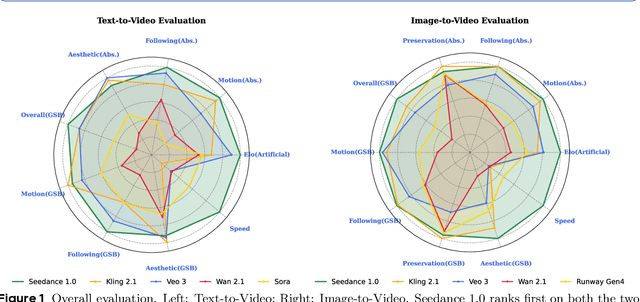
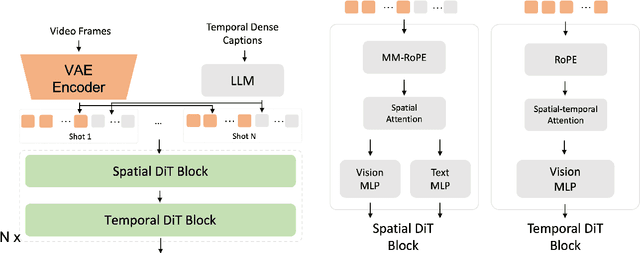

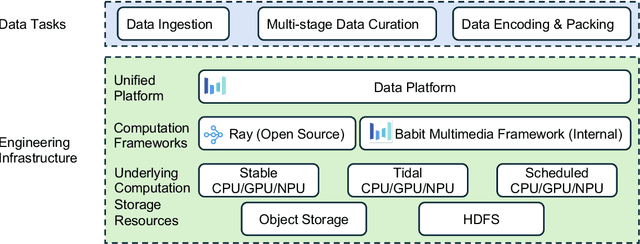
Abstract:Notable breakthroughs in diffusion modeling have propelled rapid improvements in video generation, yet current foundational model still face critical challenges in simultaneously balancing prompt following, motion plausibility, and visual quality. In this report, we introduce Seedance 1.0, a high-performance and inference-efficient video foundation generation model that integrates several core technical improvements: (i) multi-source data curation augmented with precision and meaningful video captioning, enabling comprehensive learning across diverse scenarios; (ii) an efficient architecture design with proposed training paradigm, which allows for natively supporting multi-shot generation and jointly learning of both text-to-video and image-to-video tasks. (iii) carefully-optimized post-training approaches leveraging fine-grained supervised fine-tuning, and video-specific RLHF with multi-dimensional reward mechanisms for comprehensive performance improvements; (iv) excellent model acceleration achieving ~10x inference speedup through multi-stage distillation strategies and system-level optimizations. Seedance 1.0 can generate a 5-second video at 1080p resolution only with 41.4 seconds (NVIDIA-L20). Compared to state-of-the-art video generation models, Seedance 1.0 stands out with high-quality and fast video generation having superior spatiotemporal fluidity with structural stability, precise instruction adherence in complex multi-subject contexts, native multi-shot narrative coherence with consistent subject representation.
Budget-Adaptive Adapter Tuning in Orthogonal Subspaces for Continual Learning in LLMs
May 28, 2025Abstract:Large language models (LLMs) often suffer from catastrophic forgetting in continual learning (CL) scenarios, where performance on previously learned tasks degrades severely while training on sequentially arriving tasks. Although pioneering CL approaches using orthogonal subspaces can mitigate task interference, they typically employ fixed budget allocation, neglecting the varying complexity across tasks and layers. Besides, recent budget-adaptive tuning methods for LLMs often adopt multi-stage paradigms that decouple optimization and budget allocation. Such decoupling results in potential misalignment, which hinders those approaches' practical application in CL scenarios. To address these limitations, we propose OA-Adapter, a novel parameter-efficient approach for continual learning in LLMs that unifies dynamic budget adaptation with orthogonal subspace learning in a single end-to-end training stage. Specifically, OA-Adapter introduces a dynamic bottleneck dimension adaptation mechanism that simultaneously allocates an efficient parameter budget and optimizes task objectives without misalignment. To effectively preserve previously acquired knowledge while coordinating with the dynamic budget allocation, orthogonal constraints are applied specifically between the parameter subspace of the current task and the dynamically allocated parameter subspaces of historical tasks. Experimental results on continual learning benchmarks demonstrate that OA-Adapter outperforms state-of-the-art methods in both accuracy and parameter efficiency, achieving higher average accuracy while using 58.5% fewer parameters on the standard CL benchmark.
NTIRE 2025 challenge on Text to Image Generation Model Quality Assessment
May 22, 2025Abstract:This paper reports on the NTIRE 2025 challenge on Text to Image (T2I) generation model quality assessment, which will be held in conjunction with the New Trends in Image Restoration and Enhancement Workshop (NTIRE) at CVPR 2025. The aim of this challenge is to address the fine-grained quality assessment of text-to-image generation models. This challenge evaluates text-to-image models from two aspects: image-text alignment and image structural distortion detection, and is divided into the alignment track and the structural track. The alignment track uses the EvalMuse-40K, which contains around 40K AI-Generated Images (AIGIs) generated by 20 popular generative models. The alignment track has a total of 371 registered participants. A total of 1,883 submissions are received in the development phase, and 507 submissions are received in the test phase. Finally, 12 participating teams submitted their models and fact sheets. The structure track uses the EvalMuse-Structure, which contains 10,000 AI-Generated Images (AIGIs) with corresponding structural distortion mask. A total of 211 participants have registered in the structure track. A total of 1155 submissions are received in the development phase, and 487 submissions are received in the test phase. Finally, 8 participating teams submitted their models and fact sheets. Almost all methods have achieved better results than baseline methods, and the winning methods in both tracks have demonstrated superior prediction performance on T2I model quality assessment.
Mogao: An Omni Foundation Model for Interleaved Multi-Modal Generation
May 08, 2025Abstract:Recent progress in unified models for image understanding and generation has been impressive, yet most approaches remain limited to single-modal generation conditioned on multiple modalities. In this paper, we present Mogao, a unified framework that advances this paradigm by enabling interleaved multi-modal generation through a causal approach. Mogao integrates a set of key technical improvements in architecture design, including a deep-fusion design, dual vision encoders, interleaved rotary position embeddings, and multi-modal classifier-free guidance, which allow it to harness the strengths of both autoregressive models for text generation and diffusion models for high-quality image synthesis. These practical improvements also make Mogao particularly effective to process interleaved sequences of text and images arbitrarily. To further unlock the potential of unified models, we introduce an efficient training strategy on a large-scale, in-house dataset specifically curated for joint text and image generation. Extensive experiments show that Mogao not only achieves state-of-the-art performance in multi-modal understanding and text-to-image generation, but also excels in producing high-quality, coherent interleaved outputs. Its emergent capabilities in zero-shot image editing and compositional generation highlight Mogao as a practical omni-modal foundation model, paving the way for future development and scaling the unified multi-modal systems.
Nonperiodic dynamic CT reconstruction using backward-warping INR with regularization of diffeomorphism (BIRD)
May 06, 2025
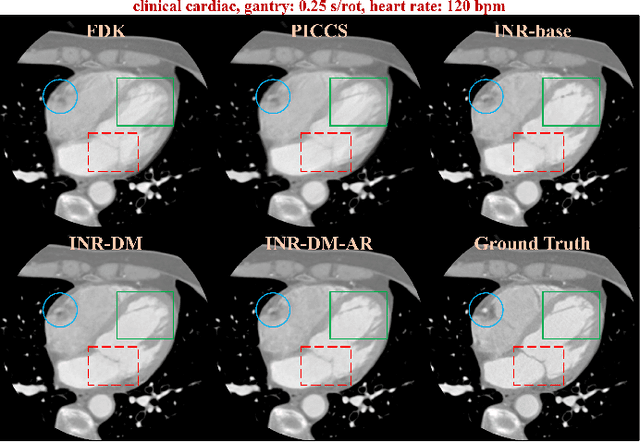
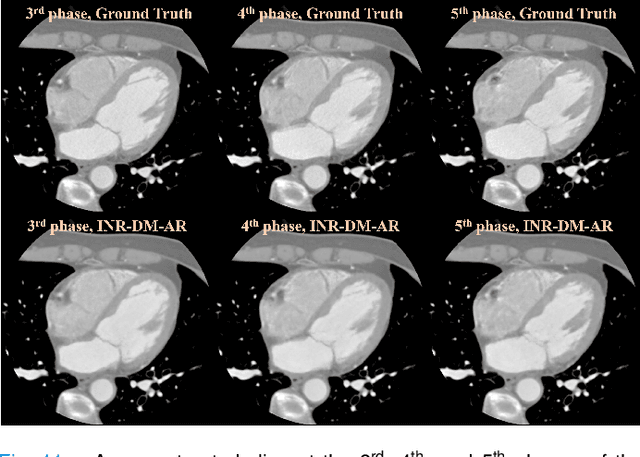
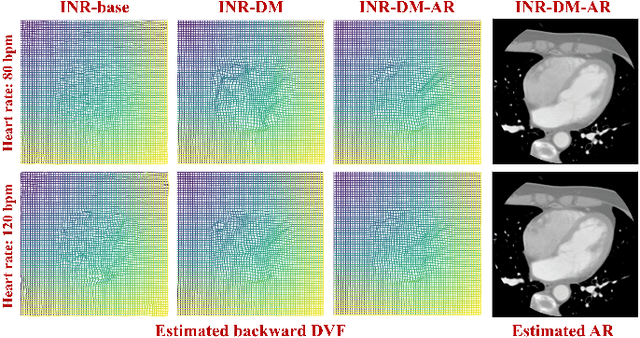
Abstract:Dynamic computed tomography (CT) reconstruction faces significant challenges in addressing motion artifacts, particularly for nonperiodic rapid movements such as cardiac imaging with fast heart rates. Traditional methods struggle with the extreme limited-angle problems inherent in nonperiodic cases. Deep learning methods have improved performance but face generalization challenges. Recent implicit neural representation (INR) techniques show promise through self-supervised deep learning, but have critical limitations: computational inefficiency due to forward-warping modeling, difficulty balancing DVF complexity with anatomical plausibility, and challenges in preserving fine details without additional patient-specific pre-scans. This paper presents a novel INR-based framework, BIRD, for nonperiodic dynamic CT reconstruction. It addresses these challenges through four key contributions: (1) backward-warping deformation that enables direct computation of each dynamic voxel with significantly reduced computational cost, (2) diffeomorphism-based DVF regularization that ensures anatomically plausible deformations while maintaining representational capacity, (3) motion-compensated analytical reconstruction that enhances fine details without requiring additional pre-scans, and (4) dimensional-reduction design for efficient 4D coordinate encoding. Through various simulations and practical studies, including digital and physical phantoms and retrospective patient data, we demonstrate the effectiveness of our approach for nonperiodic dynamic CT reconstruction with enhanced details and reduced motion artifacts. The proposed framework enables more accurate dynamic CT reconstruction with potential clinical applications, such as one-beat cardiac reconstruction, cinematic image sequences for functional imaging, and motion artifact reduction in conventional CT scans.
FlowDubber: Movie Dubbing with LLM-based Semantic-aware Learning and Flow Matching based Voice Enhancing
May 02, 2025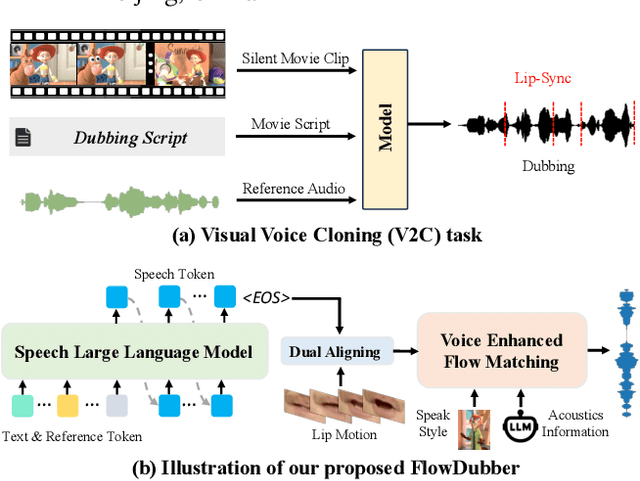

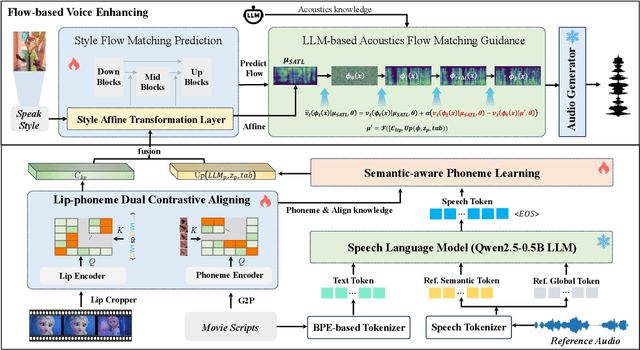

Abstract:Movie Dubbing aims to convert scripts into speeches that align with the given movie clip in both temporal and emotional aspects while preserving the vocal timbre of a given brief reference audio. Existing methods focus primarily on reducing the word error rate while ignoring the importance of lip-sync and acoustic quality. To address these issues, we propose a large language model (LLM) based flow matching architecture for dubbing, named FlowDubber, which achieves high-quality audio-visual sync and pronunciation by incorporating a large speech language model and dual contrastive aligning while achieving better acoustic quality via the proposed voice-enhanced flow matching than previous works. First, we introduce Qwen2.5 as the backbone of LLM to learn the in-context sequence from movie scripts and reference audio. Then, the proposed semantic-aware learning focuses on capturing LLM semantic knowledge at the phoneme level. Next, dual contrastive aligning (DCA) boosts mutual alignment with lip movement, reducing ambiguities where similar phonemes might be confused. Finally, the proposed Flow-based Voice Enhancing (FVE) improves acoustic quality in two aspects, which introduces an LLM-based acoustics flow matching guidance to strengthen clarity and uses affine style prior to enhance identity when recovering noise into mel-spectrograms via gradient vector field prediction. Extensive experiments demonstrate that our method outperforms several state-of-the-art methods on two primary benchmarks. The demos are available at {\href{https://galaxycong.github.io/LLM-Flow-Dubber/}{\textcolor{red}{https://galaxycong.github.io/LLM-Flow-Dubber/}}}.
Seedream 3.0 Technical Report
Apr 16, 2025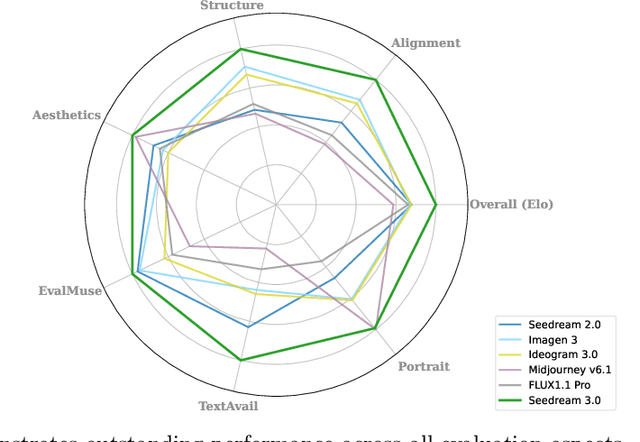



Abstract:We present Seedream 3.0, a high-performance Chinese-English bilingual image generation foundation model. We develop several technical improvements to address existing challenges in Seedream 2.0, including alignment with complicated prompts, fine-grained typography generation, suboptimal visual aesthetics and fidelity, and limited image resolutions. Specifically, the advancements of Seedream 3.0 stem from improvements across the entire pipeline, from data construction to model deployment. At the data stratum, we double the dataset using a defect-aware training paradigm and a dual-axis collaborative data-sampling framework. Furthermore, we adopt several effective techniques such as mixed-resolution training, cross-modality RoPE, representation alignment loss, and resolution-aware timestep sampling in the pre-training phase. During the post-training stage, we utilize diversified aesthetic captions in SFT, and a VLM-based reward model with scaling, thereby achieving outputs that well align with human preferences. Furthermore, Seedream 3.0 pioneers a novel acceleration paradigm. By employing consistent noise expectation and importance-aware timestep sampling, we achieve a 4 to 8 times speedup while maintaining image quality. Seedream 3.0 demonstrates significant improvements over Seedream 2.0: it enhances overall capabilities, in particular for text-rendering in complicated Chinese characters which is important to professional typography generation. In addition, it provides native high-resolution output (up to 2K), allowing it to generate images with high visual quality.
BO-SA-PINNs: Self-adaptive physics-informed neural networks based on Bayesian optimization for automatically designing PDE solvers
Apr 14, 2025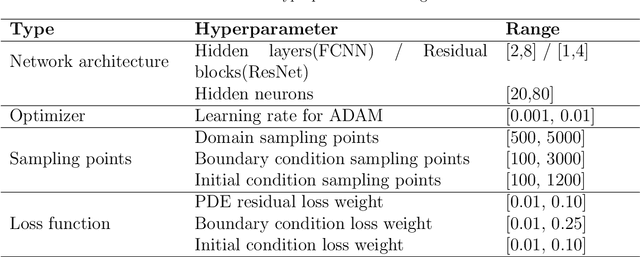

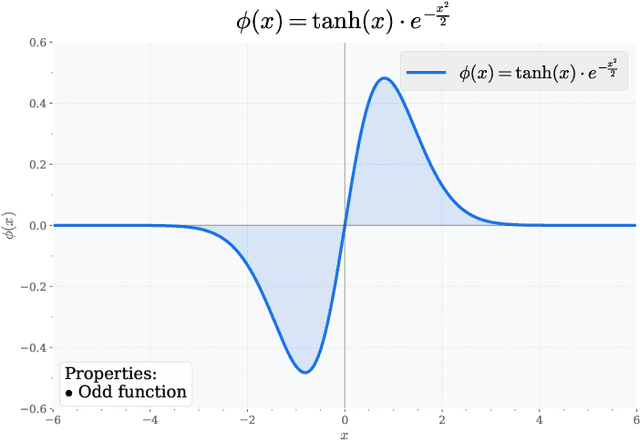

Abstract:Physics-informed neural networks (PINNs) is becoming a popular alternative method for solving partial differential equations (PDEs). However, they require dedicated manual modifications to the hyperparameters of the network, the sampling methods and loss function weights for different PDEs, which reduces the efficiency of the solvers. In this paper, we pro- pose a general multi-stage framework, i.e. BO-SA-PINNs to alleviate this issue. In the first stage, Bayesian optimization (BO) is used to select hyperparameters for the training process, and based on the results of the pre-training, the network architecture, learning rate, sampling points distribution and loss function weights suitable for the PDEs are automatically determined. The proposed hyperparameters search space based on experimental results can enhance the efficiency of BO in identifying optimal hyperparameters. After selecting the appropriate hyperparameters, we incorporate a global self-adaptive (SA) mechanism the second stage. Using the pre-trained model and loss information in the second-stage training, the exponential moving average (EMA) method is employed to optimize the loss function weights, and residual-based adaptive refinement with distribution (RAR-D) is used to optimize the sampling points distribution. In the third stage, L-BFGS is used for stable training. In addition, we introduce a new activation function that enables BO-SA-PINNs to achieve higher accuracy. In numerical experiments, we conduct comparative and ablation experiments to verify the performance of the model on Helmholtz, Maxwell, Burgers and high-dimensional Poisson equations. The comparative experiment results show that our model can achieve higher accuracy and fewer iterations in test cases, and the ablation experiments demonstrate the positive impact of every improvement.
 Add to Chrome
Add to Chrome Add to Firefox
Add to Firefox Add to Edge
Add to Edge